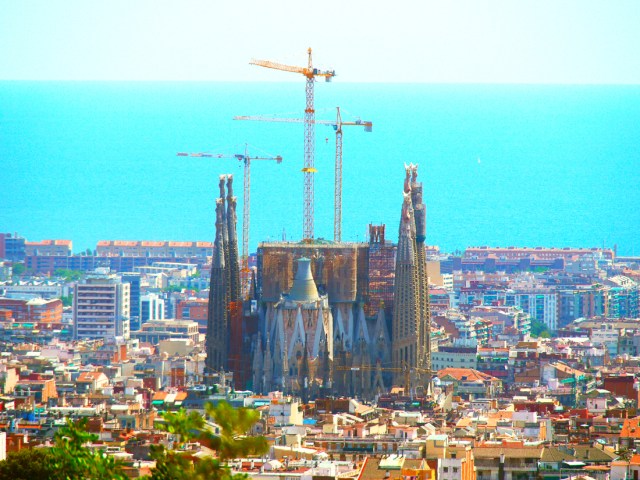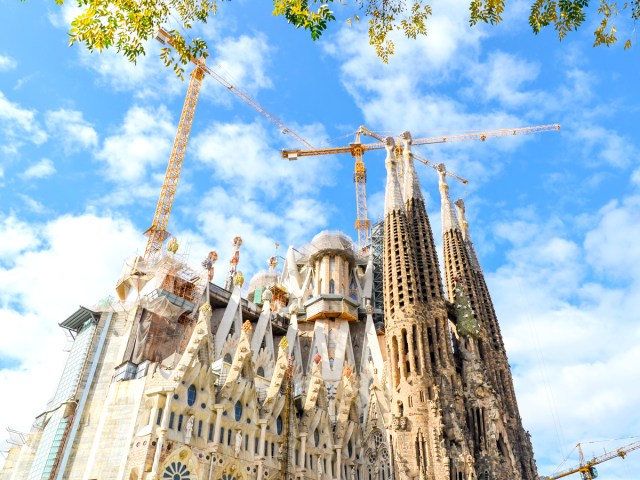At one time in history, there was nothing extraordinary about a building project dragging on for many years. Places of worship could take centuries to complete. For instance, the Cologne Cathedral — once the world’s tallest building — took 632 years to finish, while construction of the Duomo in Milan was a mammoth 579-year affair. In modern times, however, it’s relatively rare for a building to take that long to erect. But there’s been one notable exception: the Sagrada Família, the crown jewel of Barcelona, Spain. Its construction is a tale of ambition, devotion, and dogged determination — and it might soon have a closing chapter. Discover the fascinating history of one of the world’s most famous cathedrals and find out when it’s finally set to be finished.
A Problematic Start

The Basílica I Temple Expiatori de La Sagrada Família was the idea of a Barcelona bookseller named Josep Maria Bocabella. After a trip to Vatican City in 1872, he was determined to build a magnificent cathedral in his home city. Bocabella spent the next eight years fundraising and purchased a plot of land in the city’s Eixample district on which his vision for a grand and beautiful cathedral could be realized.
Though the Sagrada Família is an unmistakable example of famed architect Antoni Gaudí’s style, he wasn’t the original architect. At the project’s inception, the church hired diocesan architect Francisco de Paula del Villar, who came up with a far more traditional design than what you see today. Had he seen the project through, Barcelona would have a neo-Gothic cathedral with the usual flying buttresses and ogival windows. Construction began in 1882, but Villar fell out with the church over the cost of materials and resigned the following year.
Antoni Gaudí’s Unmistakable Style

At the time, Antoni Gaudí was an up-and-coming Catalan architect. Much of his early work — such as the distinctive lampposts in Barcelona’s Plaça Reial — was relatively small in scope, but nevertheless showcased his innovative ideas and creative talents. Gaudí’s big break came at the Paris world’s fair in 1878, after he exhibited a display cabinet made for a glove manufacturer. It caught the eye of a wealthy entrepreneur named Eusebi Güell, who commissioned him to design Palau Güell and Parc Güell, both of which remain popular visitor attractions in Barcelona more than a century later.
A fan of modernism and organic shapes, Gaudí took an unusual approach to his work, preferring to create three-dimensional models rather than traditional drawings. He was a pioneer of a mosaic technique known as trencadís, which repurposed cast-off pieces of ceramic in an artistic fashion. When Gaudí took over the Sagrada Família project in 1883, it was understood he would put his own stamp on the place, abandoning the original plans for something far more unique. The building would feature three façades — representing Nativity, Passion, and Glory — and 18 towers, the 12 smallest representing Jesus’ disciples.
Uneven Progress and an Untimely Death

At first, Gaudí juggled construction of the cathedral with other projects. He wasn’t fazed at the lack of progress, fending off his critics by saying, “My client is in no hurry,” referring to God. Nevertheless, by 1915 he had devoted his full attention to the church. But the build was funded by donations, which meant instead of the luxury of a steady revenue stream, money came in sporadically. As a result, there were bursts of activity interspersed with frustrating lulls in construction.
The work became all-consuming for Gaudí. He neglected his own appearance, and the bedraggled man in threadbare clothes was almost unrecognizable from the dapper gent he’d been in his younger days. It would be his undoing: When he was tragically hit by a tram while walking to work, passers-by dismissed him as an unfortunate beggar, and by the time anyone realized it was Gaudí, it was too late. He died of his injuries in 1926.
Further Challenges Ahead

After Gaudí’s death, work continued at a variable pace until the time of the Spanish Civil War. This period of unrest from 1936 to 1939 was perhaps the Sagrada Família’s biggest setback. Anarchists broke into what had been Gaudí’s office and smashed up his precious models, and many key individuals who had been working on Gaudí’s legacy tragically lost their lives during the conflict. Under the subsequent rule of fascist dictator General Franco, the project fared little better.
However, Gaudí had insisted the Sagrada Família project should be funded by the Catholic community as originally intended. His successors agreed. Therefore, Franco couldn’t prevent work continuing, though progress was painfully slow as money trickled in. Ironically, in recent years, city authorities have abandoned this funding model. Instead, donations from the many millions of visitors who have toured the unfinished masterpiece have paid for the most recent work.
When Will La Sagrada Família Finally Be Finished?

Thanks to the striking cathedral’s popularity with tourists, those donations have paid off, with work continuing at a steady pace. Recent milestones have included the installation of the star of the Virgin Mary in 2021 and the completion of the four towers of the Evangelists in 2023.
In March 2024, the organization behind the project announced that, barring any unforeseen setbacks, Gaudí’s masterpiece will finally be completed in 2026. It’s an immensely significant date, as the year marks the 100th anniversary of his death. The final phase will be a 566-foot central tower dedicated to Jesus Christ.
When complete, La Sagrada Família is set to be the tallest church in the world, a record currently held by Ulm Minster in Germany. Only time will tell if the monumental project — under construction for 140 years — will stay on schedule, but that hasn’t deterred the millions of annual tourists who make it one of the most-visited attractions in Europe.
More from our network
Daily Passport is part of Optimism, which publishes content that uplifts, informs, and inspires.























